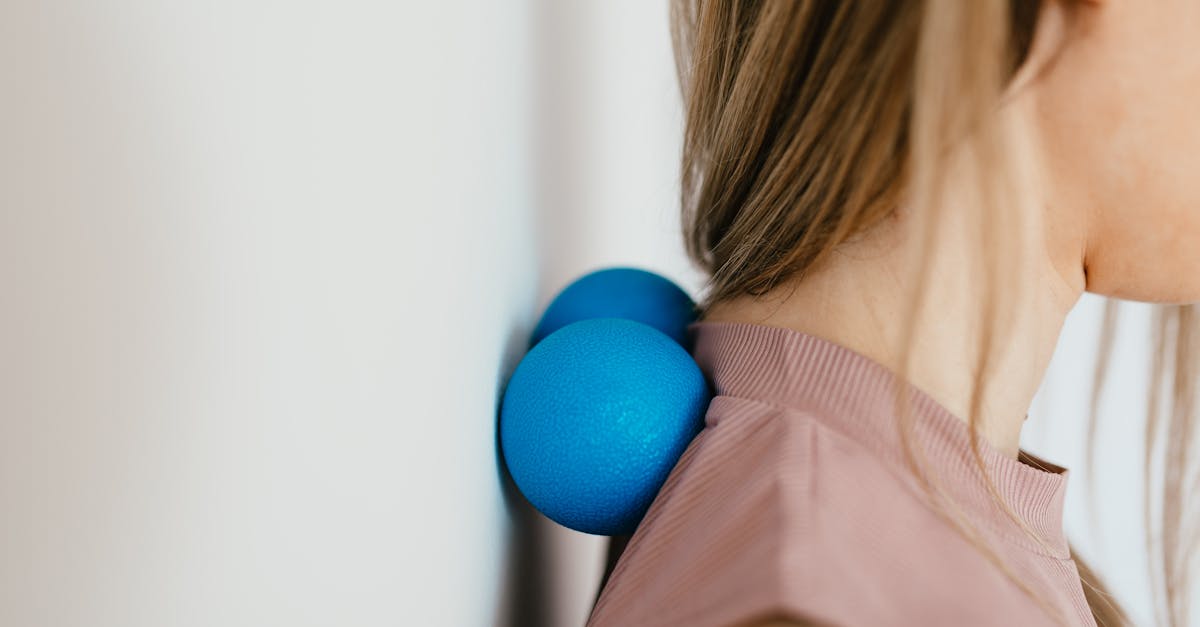In Short, back trigger points are hyperirritable spots in skeletal muscle that can lead to significant discomfort and restrict everyday activities. Understanding these trigger points is crucial for effective pain management and improving overall well-being. By identifying and alleviating these troublesome knots, individuals can benefit from enhanced mobility, reduced discomfort, and better posture. This approach works through simple techniques like stretching, maintaining good posture, and avoiding certain activities that exacerbate tension, paving a smoother path towards lasting relief. |
Back trigger points can significantly impact daily life, creating discomfort and limiting mobility. To prevent these painful trigger points, it’s essential to avoid specific practices. Maintaining poor posture while sitting or standing can exacerbate muscle tension, leading to additional strain. Additionally, wearing improper footwear can provoke discomfort in the back, as it may alter your natural alignment. Lastly, engaging in activities that involve repetitive motions without proper rest can contribute to the development of these muscular knots. Recognizing and modifying these behaviors can aid in reducing the risk of back trigger points.

Discover the Power of Pulse Align for Your Well-Being
At Pulse Align, we believe in nurturing the body’s innate ability to return to a state of balance and well-being. Our innovative, gentle approach uses imperceptible pulses to help your body gently recalibrate, addressing muscle tone symmetry and supporting optimal posture. This method not only promotes a sense of comfort but can also diminish tension in the muscles and joints, paving the way for enhanced overall vitality.
Embrace Natural Recovery with Pulse Align
Our focus at Pulse Align is not on discomfort or specific conditions but on facilitating the body’s natural recalibration process. By engaging with our services, clients often report a sense of increased comfort and improved posture as their bodies harmoniously adjust. Rather than approaching through direct treatment, we create an environment where your body can thrive and restore balance naturally.
A Personalized Approach to Wellness
Experience the benefits of a personalized approach as our clients frequently share their stories of notable improvements. Many have discovered enhanced comfort in areas such as neck and back tension, improved postural balance, and overall wellness improvements that contribute to a more vibrant life. At Pulse Align, we empower our clients to become active participants in their wellness journeys through understanding and support.
Join Us on Your Wellness Journey
We invite you to explore the offerings at Pulse Align and discover how our family-friendly services can support your well-being. We have clinics in various locations, including La Prairie, Mont-Royal, and Terrebonne. By visiting our website, you can learn more about our unique approach, find nearby locations, and easily book a consultation for yourself or your family. Remember, Pulse Align complements, but does not substitute any existing medical care. Your health journey is important, and we are here to support you in reclaiming your balance!
Medical Disclaimer
The information and advice provided on this site do not replace the advice, diagnosis, or treatment of a healthcare professional. Please note that Pulse Align complements, but does not replace, medical care. Clients should remain under the supervision of their healthcare team for any medical condition.
- Improper Posture: Slouching or leaning forward can exacerbate trigger points.
- Dehydrating Foods: Reduce consumption of processed meats, chips, and sodas.
- Excessive Sitting: Long periods of sitting without breaks can lead to tension.
- Tight Clothing: Wearing restrictive clothing can limit movement and circulation.
- High Heels: Avoid footwear that shifts weight improperly and creates tension.
- Stress: High stress levels can lead to muscle tightness and trigger point development.
- Lack of Stretching: Neglecting regular stretching can cause muscle stiffness.
- Inadequate Sleep: Poor sleep can lead to increased muscle tension.

Understanding Back Trigger Points: What to Avoid?
Back trigger points can be a significant source of discomfort and pain for many individuals. These hyperirritable spots in skeletal muscle can lead to referred pain, making daily activities challenging. To prevent the development of painful trigger points in the back, it’s essential to be aware of specific habits and behaviours that can exacerbate these issues. This article will outline key factors to avoid in order to maintain back health and overall wellbeing.
Avoiding Poor Posture
One of the leading causes of back trigger points is poor posture. Sitting or standing with slouched shoulders or an arched back puts undue pressure on spinal muscles, creating tension that can result in trigger points. To combat this, ensure you maintain a neutral spine alignment. Invest in ergonomic furniture that supports good posture, and make a conscious effort to correct your posture throughout the day.
Taking Frequent Breaks
Prolonged periods of inactivity or repetitive movements can strain back muscles, leading to trigger point formation. It’s crucial to take frequent breaks during long sitting sessions or repetitive tasks. Stand up, stretch, and walk around every 30 minutes to promote blood circulation and ease muscle tension.
Excessive Stress and Anxiety
High levels of stress and anxiety can significantly contribute to muscle tension throughout the body, including the back. When the body is under stress, it tends to tighten up, which can lead to the formation of trigger points. Consider adopting stress management techniques, such as mindfulness meditation, yoga, or deep breathing exercises, to help mitigate tension.
Neglecting Regular Exercise
Physical inactivity can weaken muscles, resulting in an increased risk of developing trigger points. A consistent exercise routine can enhance muscle strength and flexibility, helping to alleviate potential stress on the back. Aim for a mix of strength training, stretching, and cardiovascular activities to promote overall muscle health.
Focusing on Dehydrating Foods
Another factor to be cautious of is your diet. Consuming dehydrating foods, such as processed meats, chips, and soft drinks, can lead to muscle cramps and tension, making the formation of trigger points more likely. Maintain a balanced diet rich in fruits, vegetables, and whole grains, while also staying hydrated to support muscle function and lessen the risk of trigger points.
Choosing Improper Footwear
Wearing improper footwear, such as high heels or unsupportive shoes, can negatively affect your posture and lead to back problems. Select shoes that provide adequate support and cushioning. Consider orthotic inserts if necessary, as they can help to realign your posture and relieve pressure from the back muscles.
Ignoring Early Signs of Discomfort
Finally, it’s vital not to ignore early signs of discomfort. If you feel tightness or soreness in your back, addressing these symptoms promptly can prevent the development of more serious trigger points. Utilize techniques like stretching or gentle massage to relieve discomfort before it escalates into chronic pain.
By recognizing and avoiding these factors, you can take significant steps in preventing painful back trigger points and promoting overall back health. Embrace a holistic approach to your wellbeing, aligning with the principles of Pulse Align: promoting neuromuscular health, symmetry, and recalibrating your nervous system for a vibrant life without the burden of discomfort.
| Factor | Advice |
| Poor Posture | Avoid slouching and maintain a neutral spine to prevent trigger points. |
| Inadequate Hydration | Stay hydrated; cut back on dehydrating foods like fast food and soda. |
| Prolonged Sitting | Take breaks to stretch and move every hour to relieve muscle tension. |
| Unsafe Footwear | Opt for supportive shoes to minimize strain on the back muscles. |
| Excessive Stress | Implement relaxation techniques to manage stress and reduce muscle tightness. |
| Ignoring Pain | Address discomfort early to prevent escalation into chronic trigger points. |
| Static Movements | Avoid staying in one position for too long; incorporate regular movement. |
| Overexertion | Balance exercise with rest to avoid muscle fatigue and potential trigger points. |
| Neglecting Warm-ups | Always warm up before physical activities to reduce the risk of injuries. |
| Poor Sleep Position | Use proper pillows that support your neck and maintain spinal alignment while sleeping. |

Embracing Holistic Recovery: Client Experiences with Back Trigger Points
Clients from various regions, including La Prairie and Mont-Royal, have expressed how Pulse Align’s unique approach to addressing back trigger points has played a crucial role in their wellness journeys. Many have reported that the guidance provided here has allowed them to tap into their bodies’ natural ability to recalibrate and restore balance. Through comprehensive assessments and tailored strategies, individuals have discovered natural paths to relief that avoid the common pitfalls associated with trigger point pain.
In Terrebonne, for instance, clients are amazed at how simple lifestyle adjustments have led to significant improvements in their overall body function. The holistic principles adhered to at Pulse Align—such as maintaining good posture, regular stretching, and avoiding activities that cause excessive strain—have helped countless individuals emerge from a cycle of discomfort and reclaim a sense of vitality. Their personal narratives reflect a profound connection to the process of healing and wellness.
Those residing in Les Escoumins and Charlesbourg share similar sentiments, noting that their experiences with Pulse Align’s services have not only eased back pain but also fostered a deeper understanding of their physical health. The supportive environment encourages clients to explore the root causes of their discomfort, emphasizing the significance of addressing the entire body’s well-being in conjunction with targeted treatments for myofascial trigger points.
Moreover, testimonials from clients in Deux-Montagnes and Sainte-Marie illustrate the effectiveness of Pulse Align’s collaborative approach. By working closely with healthcare teams, Pulse Align ensures that each client receives holistic support throughout their healing process. The results are tangible: many have discovered a renewed strength and an ability to engage more fully in activities they once found challenging.
For individuals in Chicoutimi, Châteauguay, and Saint-Jérôme, embracing the fundamentals of body function and wellness can be a game-changer. Clients commend the non-invasive treatments that offer relief without the need for medications or invasive procedures. The journey towards wellness is often accompanied by a newfound appreciation for the body’s resilience and capability to heal.
Pulse Align stands out as a beacon of hope for those in search of holistic recovery. The principles instilled here resonate well beyond the clinic, as clients report continued progress in their journeys towards a balanced and healthy life. In bustling Panama City, the influx of testimonials showcases how effective our services have been for individuals looking to improve their quality of life and manage back trigger points naturally.
For anyone interested in exploring these transformative experiences and seeking wellness, please visit Our Clinics to find Pulse Align services near you. With personalized care and a commitment to holistic health, clients and their families can expect the journey to recovery to be both empowering and enriching.
Understanding back trigger points is crucial for individuals seeking relief from chronic pain. Often described as hyperirritable spots in the skeletal muscle, these points can feel like palpable nodules or “knots” in the muscle, leading to discomfort and restricting daily activities. To effectively manage and prevent these painful areas from developing, it is important to recognize certain factors and behaviors that may aggravate them.
A significant contributor to the formation of back trigger points is poor posture. Sitting for long periods in an unsupported position, such as slouching on a couch or using a chair without proper back support, can cause muscle imbalances and tension. This continuous strain can lead to chronic discomfort in the back region. Individuals should make a conscious effort to maintain good posture throughout their daily activities, whether sitting, standing, or even sleeping. Utilizing ergonomic chairs with adequate back support and ensuring that workstation setups promote healthy alignment are effective strategies to mitigate these issues.
Another critical factor to consider is hydration. Dehydration can exacerbate muscle tightness, thereby increasing the likelihood of developing trigger points. It is advised to consume sufficient water and reduce the intake of dehydrating foods and beverages, such as fast food and soda. Nutrition plays a pivotal role as well; a balanced diet rich in essential nutrients can support muscle function and recovery, lowering the risk of muscular knots.
Additionally, certain lifestyle choices can lead to excessive strain on the back muscles. Activities that involve repetitive motions or heavy lifting without proper technique can contribute to the formation of trigger points. Individuals who engage in sports or physical labor should prioritize warm-up routines and stretching exercises, which serve to enhance flexibility and prepare the muscles for exertion. Practicing techniques such as squat lifts instead of bending from the waist can prevent undue stress on the back.
Incorporating relaxation techniques is essential in an overall strategy for reducing the incidence of back trigger points. Chronic muscle tension can be managed through methods such as deep breathing, yoga, or other forms of meditation. These techniques help to reduce the emotional and physical stress that can contribute to muscle tightness, ultimately allowing for better muscular performance and recovery.
Innovative approaches to treatment also play a key role in managing back trigger points. Dr. Sylvain Desforges, an expert in osteopathy, naturopathy, and manual medicine, is the founding president of TAGMED clinics and the ACMA association. With a career devoted to healthcare innovation, he specializes in chronic pain management and employs advanced techniques such as spinal decompression and shockwave therapy. His commitment to providing evidence-based care aims to enhance patients’ health and well-being, utilizing technology to combat the troubling symptoms associated with trigger points.
By adopting preventive measures and being mindful of the factors that contribute to back trigger points, individuals can significantly reduce their risk of developing this painful condition. Maintaining good posture, staying hydrated, avoiding excessive strain, and integrating relaxation techniques into daily life are simple yet effective strategies for managing back health. Furthermore, working with professionals like Dr. Desforges can offer valuable insights and therapies that enhance recovery and overall quality of life.
Understanding TAGMED’s Neurovertebral Decompression Technology
Mécanisme d’action
The neurovertebral decompression technology offered by TAGMED utilizes a controlled and progressive traction force applied to the spine. This method is designed to create space between the vertebrae, effectively reducing pressure on the intervertebral discs and adjacent nerve roots. By relieving this pressure, the technology not only mitigates the symptoms associated with conditions like disc herniation and spinal stenosis but also enhances fluid circulation in the targeted area. As a result, this process diminishes inflammation and alleviates pain.
Avantages spécifiques
This non-invasive technique provides an effective solution for managing chronic pain and associated symptoms linked to conditions such as disc bulges and foraminal stenosis. By relieving the compression on the nerve structures and optimizing the circulation of fluids around the discs, TAGMED’s approach promotes faster healing and significantly improves the quality of life for a diverse pool of patients. Individuals often report increased mobility and decreased dependence on pain medications as a direct result of this treatment.
Comparaison avec d’autres traitements
When compared to traditional treatments commonly employed for managing issues discussed in Back Trigger Points: What to Avoid?, such as analgesics, corticosteroid injections, surgery, or conventional physiotherapy, TAGMED’s neurovertebral decompression stands out. The lack of invasive procedures minimizes the risks associated with medications and surgeries while ensuring a faster recovery time. Many patients find themselves able to return to their normal activities significantly quicker when utilizing TAGMED’s approach.
Études de cas ou témoignages
Numerous patients have reported substantial improvements after undergoing neurovertebral decompression with TAGMED. Testimonies from these individuals highlight a consistent reduction in lasting pain and quicker resumption of daily activities. Patients shared their experiences of becoming less reliant on pharmacological treatments, affirming the effectiveness of this approach in enhancing their overall well-being and restoring functionality.
Understanding back trigger points is essential in managing and preventing persistent discomfort. These hyperirritable spots, which often result from muscle tension and poor posture, can transform into debilitating knots that interfere with daily activities. To minimize the development of these trigger points, it is crucial to adopt specific lifestyle changes and avoid certain behaviors that exacerbate muscle tightness.
One significant factor to address is posture. Maintaining proper alignment throughout the day can significantly reduce the strain on your back muscles, making you less susceptible to trigger points. Avoid slumping or hunching over while sitting or standing, and ensure that your workstation is ergonomically sound. Investing in supportive chairs and using proper armrests can also help alleviate unnecessary tension.
Another critical aspect is hydration. Dehydration can contribute to muscle soreness and trigger point formation; thus, it is vital to drink plenty of water daily. Additionally, cutting back on dehydrating foods, such as processed snacks and sugary drinks, will further support your body’s optimal hydration levels.
Lastly, consider your footwear choices. Wearing flat shoes can offer better support and alignment to your body, ultimately reducing stress on your lower back. Avoiding high heels or shoes with inadequate support can lessen the risk of muscle tension building up in your back.
By being aware of these potential pitfalls and actively working to avoid them, you can take significant steps towards managing back trigger points effectively. Your body will thank you for it as you reclaim comfort and vitality in your everyday life.

Do you suffer from a chronic condition that responds little or not at all to conservative treatments?
In today’s fast-paced world, many individuals are seeking non-traditional solutions for discomfort and tension in their bodies. Pulse Align offers an innovative, non-invasive method that can help restore your body’s natural balance and posture through gentle, imperceptible pulses. This approach aims at promoting relaxation and reducing muscle and joint tension, which can lead to a more comfortable and aligned state.
It is essential to understand that Pulse Align does not aim directly at discomfort but instead focuses on helping the body recalibrate itself naturally. This self-calibration often results in amazing improvements to overall wellness and posture, fostering a harmonious relationship between the muscles and joints. Clients frequently share how this gentle approach has allowed their bodies to return to a state of balance.
Our personalized approach at Pulse Align allows us to cater to the unique needs of each client. Testimonials frequently highlight notable improvements in tension and overall wellness. Many have expressed profound satisfaction with their experiences, claiming significant enhancements in posture while reporting reductions in the typical discomforts commonly faced in daily life. This sense of well-being is nurtured through the understanding that our approach supports the body’s inherent ability to function optimally.
We invite you to explore more about Pulse Align by visiting our website, where you can find nearby locations, including La Prairie, Mont-Royal, Terrebonne, and others. Booking a consultation for yourself or your family is just a click away. Remember, Pulse Align is designed to complement your existing healthcare services rather than replace them. This ensures a harmonious approach to your overall wellness journey.
Our state-of-the-art technology at Pulse Align enables the quick restoration of muscle tone symmetry, helping to reduce tension at the joints. We prioritize offering a painless, sophisticated, and personalized service that aligns with your needs. Our screenings and assessments are tailored to individuals of all ages, making us a safe choice for pregnant women and young children. If you’re ready to take a significant step towards better living, we encourage you to learn more about our services and book an appointment today. Experience the safe, non-invasive, and family-friendly approach that Pulse Align has to offer.
Frequently Asked Questions
Dorsal Pain
Une hernie discale peut-elle provoquer une douleur dorsale ?
Oui, une hernie discale au niveau thoracique, bien que moins fréquente, peut causer des douleurs dorsales et parfois des symptômes neurologiques.
La kinésithérapie est-elle recommandée pour la douleur dorsale ?
Oui, un kinésithérapeute peut proposer des exercices adaptés, des étirements et des techniques manuelles pour soulager la douleur.
Les massages sont-ils efficaces pour soulager la douleur dorsale ?
Oui, un massage professionnel peut détendre les muscles tendus, améliorer la circulation et soulager la douleur à court terme.
La chaleur ou le froid aident-ils à soulager la douleur dorsale ?
La chaleur détend les muscles et améliore la circulation, tandis que le froid réduit l’inflammation. Les deux méthodes peuvent être utiles selon la situation.
Peut-on faire des étirements pour soulager la douleur dorsale ?
Oui, des étirements doux ciblant le dos et les muscles environnants aident à réduire la tension et à soulager la douleur.
La douleur dorsale est-elle courante chez les sportifs de haut niveau ?
Oui, les entraînements intensifs, les postures extrêmes et les blessures répétitives peuvent contribuer à la douleur dorsale.
Fumer peut-il influencer la douleur dorsale ?
Oui, le tabagisme réduit la circulation sanguine vers les disques et les muscles, augmentant le risque de douleurs dorsales.
Les talons hauts peuvent-ils causer des douleurs dorsales ?
Oui, ils modifient l’alignement du bassin et de la colonne, ce qui peut provoquer des tensions au niveau du dos.
Do strengthening exercises for the back help reduce mid-back pain?
Yes, exercises targeting the paravertebral muscles, abdominals, and core can improve stability and reduce pain.
La chiropractie peut-elle soulager la douleur dorsale ?
Oui, un chiropracteur peut ajuster les articulations vertébrales, ce qui peut apporter un soulagement, mais l’efficacité varie selon les individus.
Louis Tremblay knows firsthand how dorsal pain can overshadow everyday life, turning simple tasks into daunting challenges. As a Dorsal Pain Awareness Advocate at Pulse Align, he takes pride in translating cutting-edge research into down-to-earth guidance, offering actionable tips and heartfelt understanding for those seeking relief. Louis is driven by the belief that an informed community, bolstered by encouragement and empathy, can reclaim comfort and rediscover vitality. In his writing, readers find both practical strategies and a compassionate voice, making it clear: no one should have to shoulder the weight of dorsal pain alone.
Medical Disclaimer
The information and advice provided on this site do not replace the advice, diagnosis, or treatment of a healthcare professional. Please note that the author of this article is neither a doctor nor a specialist in a medical specialty as defined by the Collège des médecins du Québec. Manual medicine, functional medicine, and sports medicine as described on this site exclude any medical treatment or diagnosis made by a doctor or medical specialist. Always consult your doctor for any medical questions. For more details, please read our complete Legal Notice.




